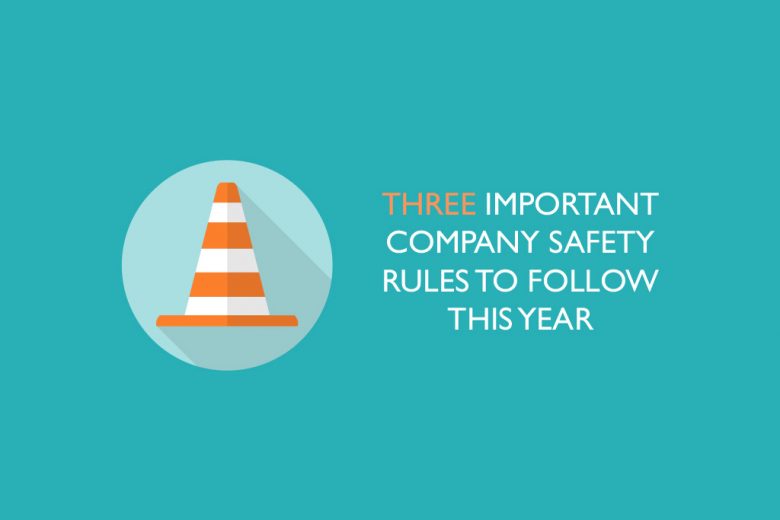Three important company safety rules to follow this year
How safe is your company? Start the new year by resolving to follow these three important safety rules, and help to keep everyone safe.
The start of a new year is traditionally a time when we sweep out old, unhelpful habits and usher in a new commitment to be and do better over the next 12 months.
You don’t just need to restrict your new years resolutions to yourself either – January is the perfect time to review your work habits and ensure that you haven’t got into any bad ones. And where better to start than your company’s safety rules?
It’s easy to assume that safety rules are just for large companies with lots of employees, or businesses that deal with the public. But EVERY business, however small has a legal and moral requirement to observe safety laws and recommendations. Further to this, health and safety can have a significant impact on business by reducing absenteeism and improving reputation.
Three important company safety rules to follow this year
To help you stay safe and legal over the next year, here are five new year safety rules business writer Patrick Vernon recommends implementing.
1) Keep a first aid kit close to hand
Accidents and injuries can occur at any time, which is why you need to carry out a thorough assessment in order to decide what first aid provisions are required. While workplace risks vary, the very minimum you should have is a fully stocked first aid kit (like those from Brosch Direct), an appointed person to take care of first aid arrangements and information for all employees giving details of first aid arrangements.
If your workplace is considered high-risk you may even decide to appoint a first aider. This is someone who has had relevant first aid training and is able to deal with any medical situations in the correct way. (The Health and Safety Executive provides information about selecting a competent first aid training provider and will be able to guide you through this important health and safety process.)
2) Carry out a risk assessment
A risk assessment helps keep people safe at work and is typically made up of five simple yet effective steps.
In order to ensure employees are not in danger you must first systematically check for possible physical, mental, chemical and biological hazards. You can then work out who is at risk and how, including regular staff and any agent workers that might visit on a temporary basis.
Step three is assessing the risks and taking action to make them better and step four requires making a record of what you’ve found and how you are fixing the problem. Finally, you should review the risk assessment regularly to ensure safe working conditions and practices are maintained.
3) Put up safety signs
According to the Health and Safety (Safety Signs and Signals Regulations) 1996, employers must put up specific safety signs when there is a risk that has not been avoided and controlled by other means.
There are many different safety signs available, including triangular yellow and black warning signs, circular blue and white mandatory signs, red and white circular prohibition signs, rectangular green safe condition signs and red and white fire equipment signs, but a risk assessment will help you to know which notices you need. All signs should be clearly visible and are designed to give people correct information.
Finally, you should review the risk assessment regularly to ensure safe working conditions and practices are maintained.
Keep everyone safe this year
A safe workplace means safe employees – it also helps to keep you safe! And while it may sometimes feel there are so many rules and regulations you need to follow, they’re often there for a good reason. So this year resolve to follow these three rules and enjoy peace of mind.
(If you work for a company that hasn’t implemented these rules yet, make sure you let them know about their legal and moral obligations!)
Want more safety advice? Read four ways you can ensure your company’s safety is up to scratch.




